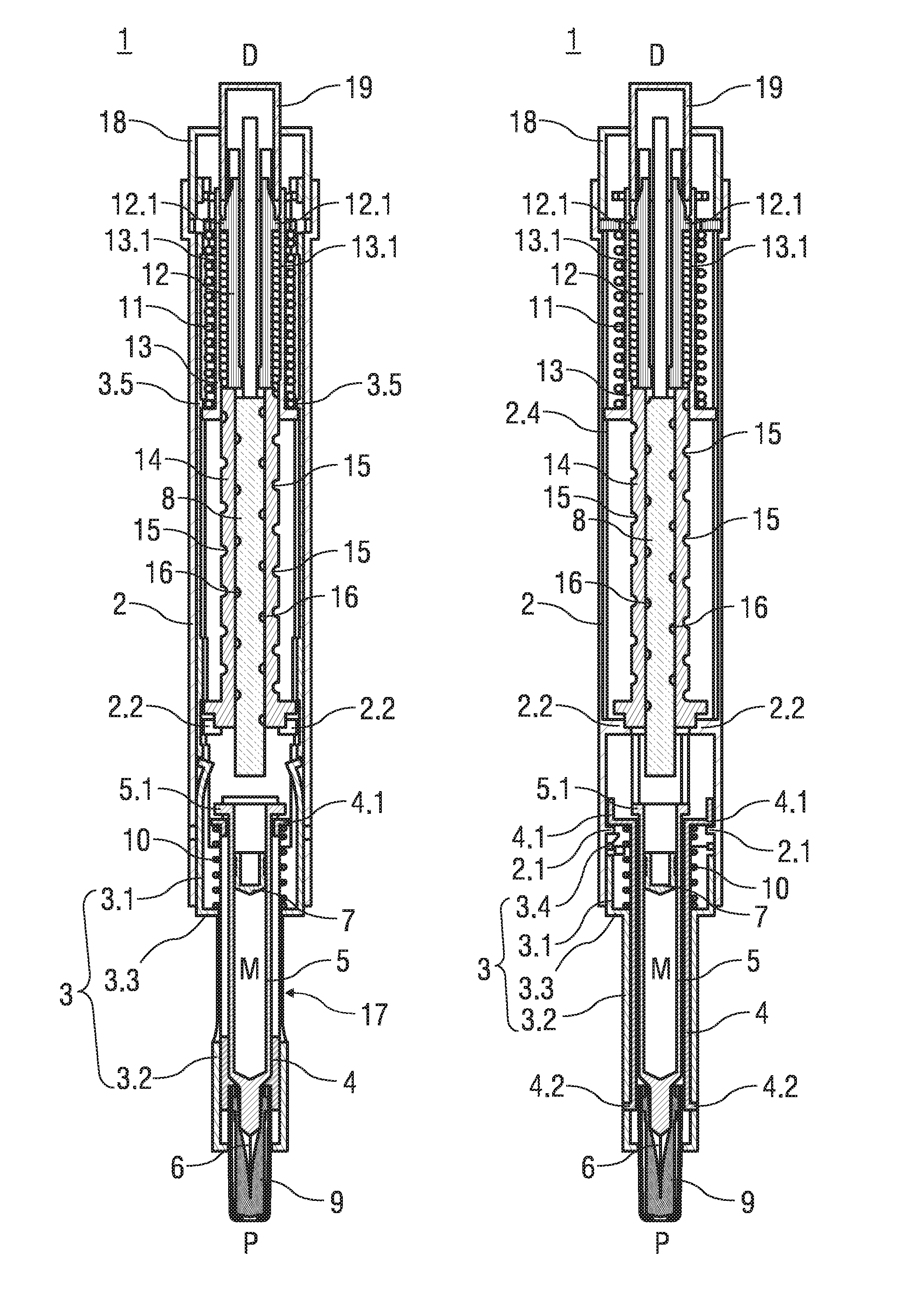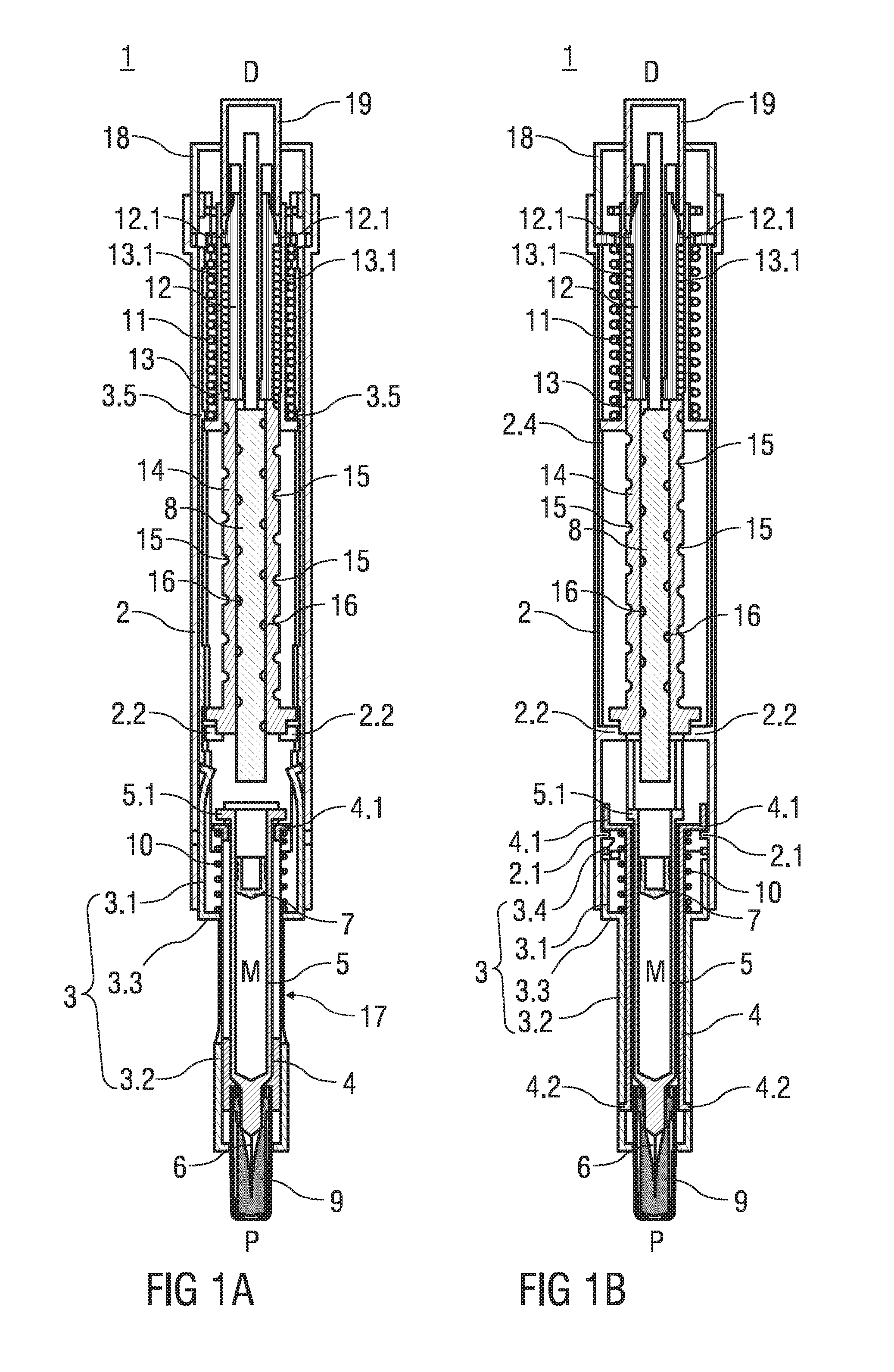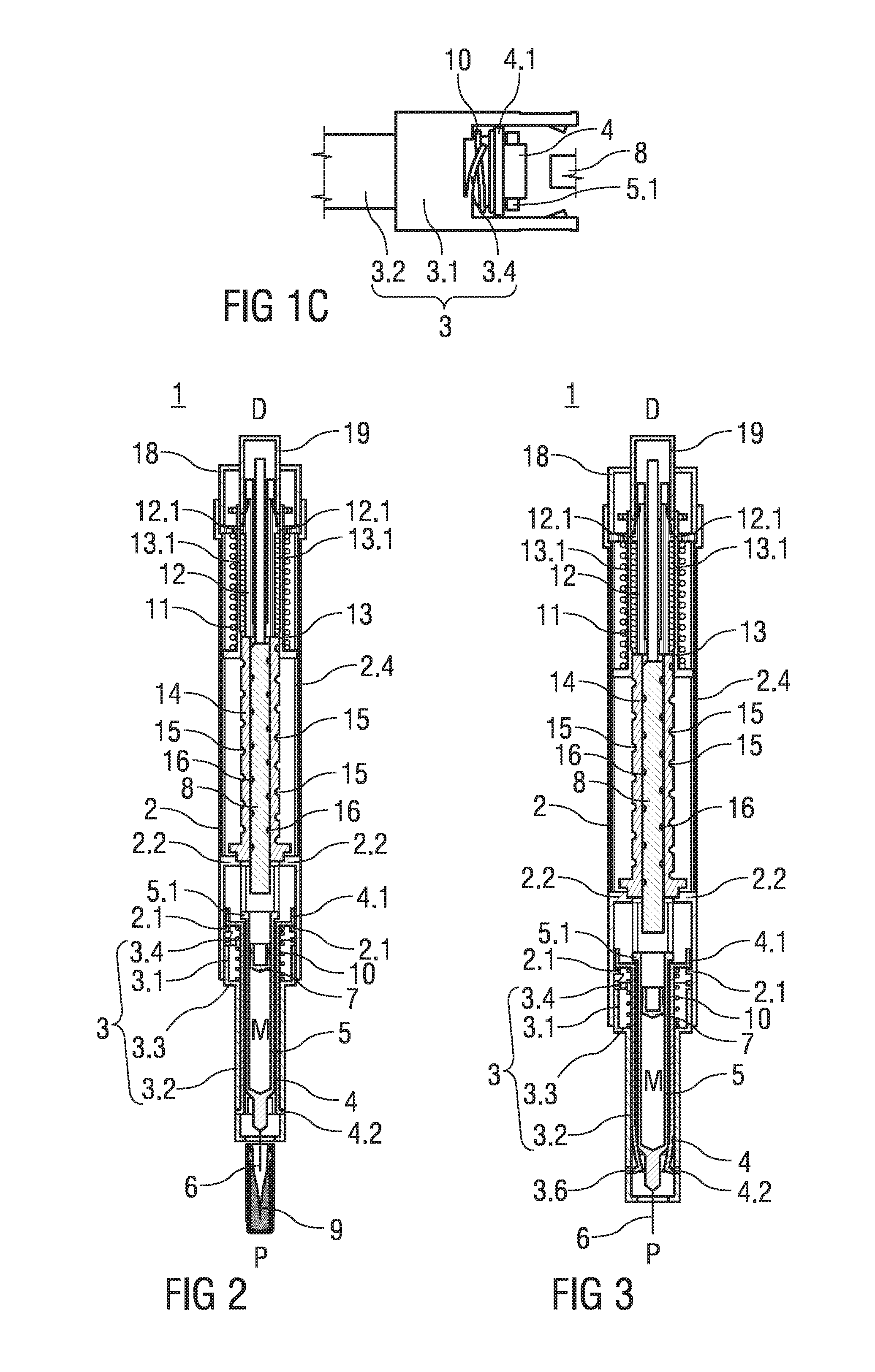Force transmission arrangement for auto-injector
a technology of auto-injector and transmission arrangement, which is applied in the direction of intravenous devices, infusion needles, other medical devices, etc., can solve the problems of user delivery an underdose, injection force may be too high for the user, and the risk of users and healthcare professionals
- Summary
- Abstract
- Description
- Claims
- Application Information
AI Technical Summary
Benefits of technology
Problems solved by technology
Method used
Image
Examples
Embodiment Construction
[0126]FIG. 1 shows two longitudinal sections in two section planes of an auto-injector 1 with force control in an as shipped state. The auto-injector 1 comprises an elongate housing 2, an essentially tubular shroud 3 arranged inside the housing 2 and slidable in longitudinal direction with respect to the housing 2. A distal portion 3.1 of the shroud has an external diameter selected to fit into the housing 2. The distal portion 3.1 extends essentially through the entire housing 2 to the distal end D. The biggest part of the distal portion 3.1 consists of two longitudinal extensions rather than a tube shape in order to allow other parts of the auto-injector 1 to engage in the housing 2 for preventing relative rotation. This could alternatively be achieved by a tubular distal portion 3.1 with longitudinal slots. A proximal portion 3.2 of the shroud 3 has a reduced diameter compared to the distal portion 3.1 for slidably accommodating a syringe carrier 4. The syringe carrier 4 holds a ...
PUM
 Login to View More
Login to View More Abstract
Description
Claims
Application Information
 Login to View More
Login to View More - R&D
- Intellectual Property
- Life Sciences
- Materials
- Tech Scout
- Unparalleled Data Quality
- Higher Quality Content
- 60% Fewer Hallucinations
Browse by: Latest US Patents, China's latest patents, Technical Efficacy Thesaurus, Application Domain, Technology Topic, Popular Technical Reports.
© 2025 PatSnap. All rights reserved.Legal|Privacy policy|Modern Slavery Act Transparency Statement|Sitemap|About US| Contact US: help@patsnap.com



